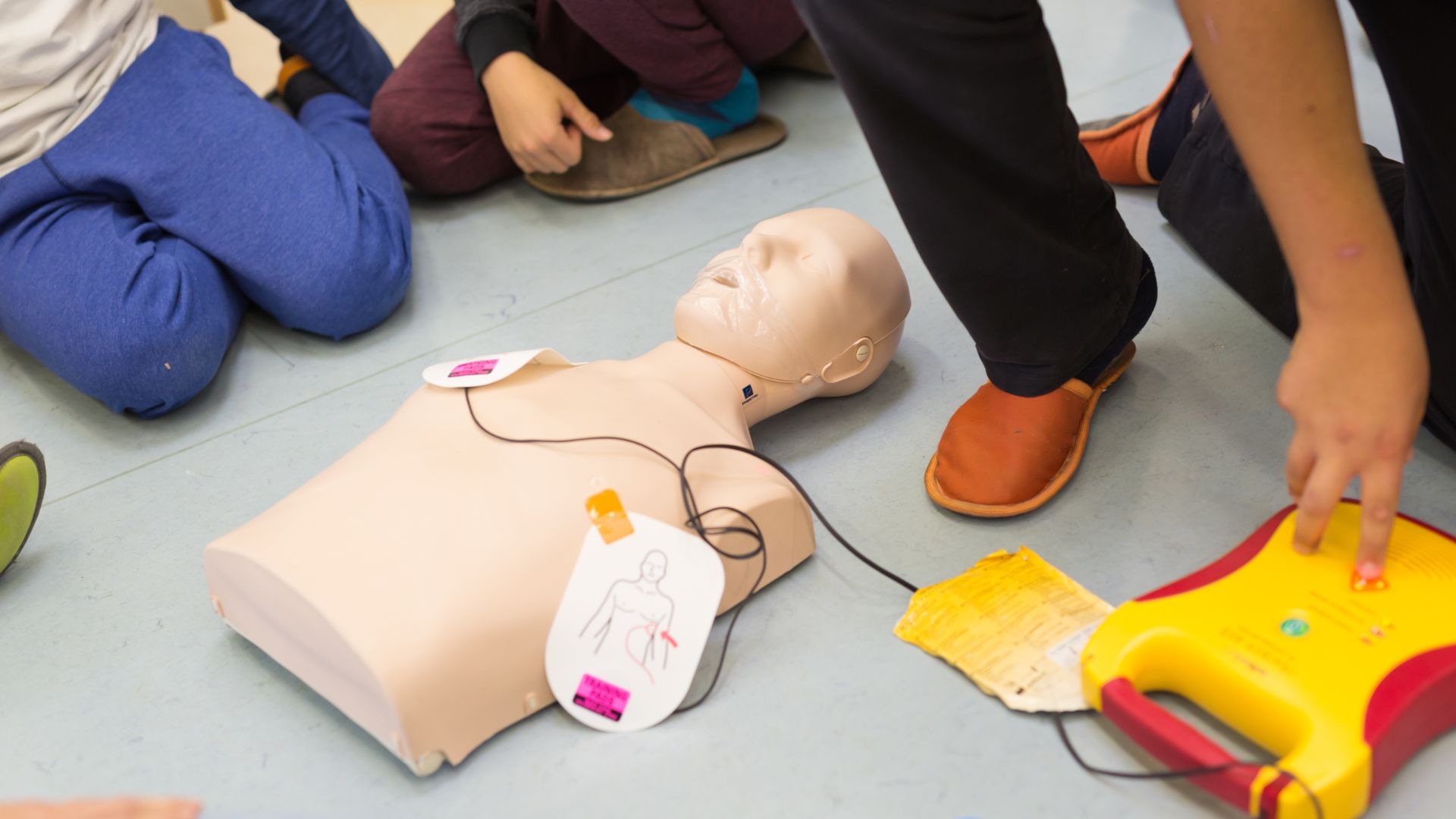
In recent years, there has been a growing emphasis on public access to defibrillation devices, commonly known as automated external defibrillators (AEDs). These life-saving devices are designed to provide immediate treatment for sudden cardiac arrest (SCA), a condition in which the heart suddenly stops beating. However, despite their increasing prevalence in public spaces, many people still lack a clear understanding of how AEDs work and their role in the chain of survival. In this blog post, we will delve into the basics of defibrillation and provide you with a comprehensive guide to understanding AEDs.
Defining some key terms:
- Sudden Cardiac Arrest (SCA): Sudden cardiac arrest is a life-threatening condition that occurs when the heart’s electrical system malfunctions, causing the heart to stop pumping blood to the rest of the body. SCA can lead to loss of consciousness and, if not treated immediately, can be fatal.
- Defibrillation: Defibrillation is a medical procedure that uses an electrical shock to restore the heart’s normal rhythm during SCA. It involves the delivery of a controlled electric current to the heart through the chest wall, aiming to disrupt abnormal electrical activity and allow the heart to resume its normal pumping action.
- Automated External Defibrillator (AED): An automated external defibrillator, or AED, is a portable device that analyzes a person’s heart rhythm and delivers an electric shock if necessary. AEDs are designed to be user-friendly, with voice and visual prompts that guide individuals through the steps of defibrillation.
Let’s explore the process of defibrillation using an AED:
- Recognizing SCA: The first step in defibrillation is recognizing the signs of sudden cardiac arrest. These include the sudden loss of responsiveness, absence of normal breathing, and the lack of a pulse. If you come across someone who is unresponsive and not breathing normally, it is crucial to suspect SCA and take immediate action.
- Activating Emergency Medical Services (EMS): In any cardiac emergency, activating EMS should be the top priority. Call your local emergency number and provide them with accurate information about the situation. Time is of the essence, and professional medical help is essential for the best possible outcome.
- Locating and Using an AED: If an AED is available nearby, retrieve it and bring it to the person in need. AEDs are typically stored in easily accessible public locations, such as schools, airports, and public buildings. Once you have the AED, turn it on, and follow the voice and visual prompts. The AED will guide you through the necessary steps, including placing the electrode pads on the person’s bare chest.
- Analyzing the Heart Rhythm: Once the electrode pads are in place, the AED will analyze the person’s heart rhythm to determine if a shock is needed. It is crucial to ensure that no one is touching the person when the AED is analyzing the rhythm to avoid interference.
- Delivering a Shock: If the AED detects a shockable rhythm, it will instruct you to stand clear and deliver a shock. It is vital to follow the AED’s instructions precisely and avoid touching the person during the shock delivery.
- Performing CPR: After delivering a shock, or if a shock is not advised, the AED will prompt you to perform cardiopulmonary resuscitation (CPR). CPR involves chest compressions and rescue breaths and helps to circulate oxygenated blood to the vital organs until further medical assistance arrives.
- Continuously Follow AED Prompts: The AED will continue to provide prompts and guide you through the entire process, including when to resume CPR and when to reanalyze the heart rhythm. It is vital you remain attentive to the AED’s prompts and continue following its instructions until EMS professionals take over.
It’s important to note that defibrillation is most effective when administered as soon as possible after the onset of sudden cardiac arrest. Every minute that passes without defibrillation decreases the chances of survival by about 7-10%. This is why the widespread availability and proper use of AEDs are essential in improving survival rates for SCA.
In addition to understanding the basic steps of defibrillation, it is also important to familiarize yourself with the location of AEDs in your community and how to access them. Many AEDs are housed in wall-mounted cabinets that are easily recognizable with clear signage. Take the time to locate AEDs in your workplace, school, gym, or any other public spaces you frequent. Being prepared and knowing where to find an AED can make a significant difference in an emergency situation.
The Role of AEDs in Emergencies
Understanding defibrillation and the role of AEDs is crucial for everyone. Sudden cardiac arrest can happen to anyone, anywhere, and having the knowledge and skills to respond can save lives. Remember the key steps: recognize SCA, activate EMS, locate and use an AED, analyze the heart rhythm, deliver a shock if advised, perform CPR, and continue following the AED’s prompts until professional help arrives.
Register for a CPR Class today with CPR St. Petersburg to ensure you have the training you need!
Let’s work together to create a society where AEDs are widely available, and individuals are equipped with the skills to use them. By spreading awareness and understanding about defibrillation, we can increase the chances of survival and make a significant impact on saving lives in our communities.